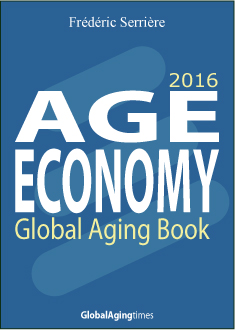Despite the societal impact of a rapidly growing aging population struggling with loneliness, a recent study by IBM (NYSE: IBM) finds there is also a tremendous opportunity for new and existing organizations to create solutions that improve how older adults engage with the world. Cognitive and cloud technology can be used to aggregate and interpret data, connect organizations, and help prevent loneliness by delivering personalized resources and social support within communities.
By 2050, the United Nations1 expects that Japan and Germany will have close to 40 percent or more of their population over the age of 60, and the United States, Canada, and the United Kingdom will have approximately 30 percent of the same age group. Loneliness in older adults has been well documented and shown to have health risks equivalent to those of smoking and diabetes, with an overall 26 percent increase in mortality2. The impact extends beyond health issues, though; such as governments potentially struggling to manage their overall social care budgets and communities that could lose the contribution of older adults in civic activities.
To better understand the impact of loneliness on the aging population, IBM’s Institute for Business Value (IBV) conducted interviews with a global ecosystem of medical professionals, social workers, consumer and electronics manufacturing experts, advocacy leaders, as well as software startups and government officials for its study, “Loneliness and the aging population – how businesses and governments can address a looming crisis”. The report focuses on addressing how organizations can better understand loneliness and aging, and provides recommended actions for to foster greater connection among older adults.
“Loneliness in older adults has been described as ‘your world dying before you do‘,” said Dr. Paul Tang, Vice President, Chief Health Transformation Officer at IBM Watson Health. “In order to mitigate loneliness, we need to help people rebuild social connections and engagement with their communities. Future solutions will require innovative thinking, disruptive organizational and business models, as well as the support of new technologies to adapt to the needs of a changing society.”
By leveraging a cognitive or cloud platform –including natural language, visual recognition, data integration, artificial intelligence and more–any number of entities such as cities, agencies, hospital networks, telecommunication vendors, and others can quickly build cost-effective, community-based solutions that are personalized and adaptable to meet the needs of an aging individual.
Other organizations such as Front Porch are using technologies such as It’s Never 2 Late (iN2L) to create a digital community where older individuals can come together online using a wide array of digital tools to support health, wellness, engagement, growth and learning. “Siloed data sets are a constant challenge, pulling them together and making information meaningful, actionable and simple is a tremendous opportunity,” said Kari Olson, Chief Innovation and Technology Officer, Front Porch. “Ultimately we are creating a tipping point where we identify the best technologies that can meet the needs of older adults and help individuals live independently and well in the place they choose to call home.”


